Projected Decal
A projected decal is a decal projected onto a surface by means of perspective projection. You can create an instance of the image projected onto a surface from a single point as a cone. These decals are of the same scale in spite of how far the surface they are projected onto is.
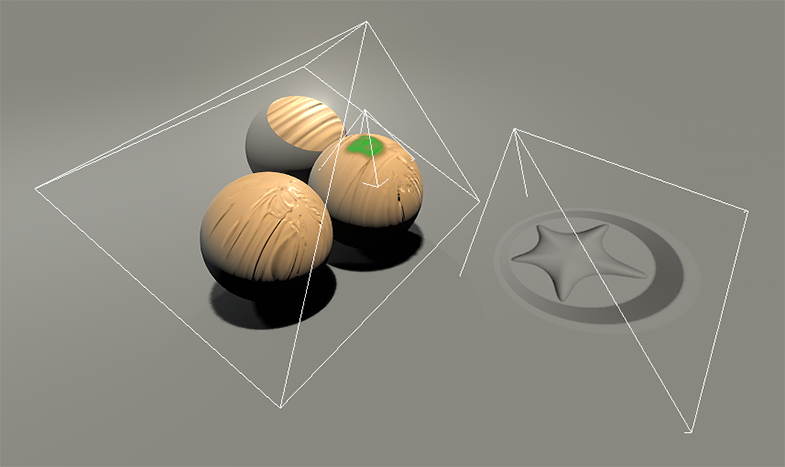
When the human eye views a scene, objects in the distance appear smaller than objects close by — this is known as perspective.
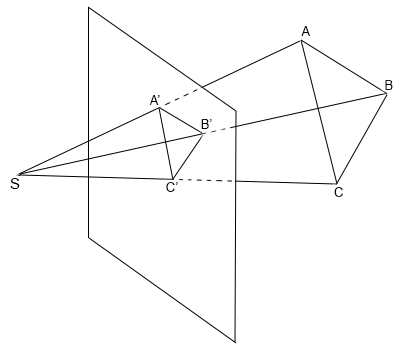
While orthographic projection ignores this effect to allow accurate measurements, perspective definition shows distant objects as smaller to provide additional realism.

See Also
- The DecalProj class to manage projected decals via API
- A set of samples located in the data/samples/decals/ directory:
- deferred_proj_00
- deferred_proj_01
Creating a Projected Decal#
To create a projected decal, perform the following:
In the Menu bar, choose Create -> Decal -> Projected.
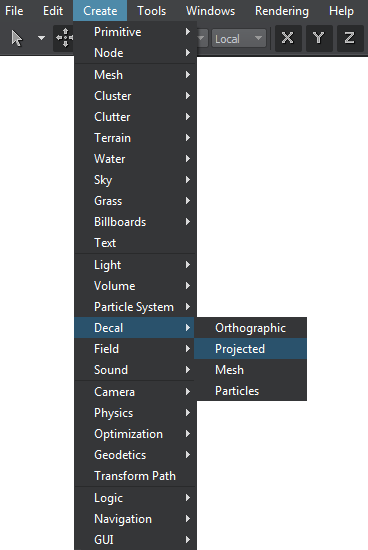
Place the decal on the existing surface (for the decal to be projected, the projection pyramid should intersect the surface) and specify the required settings:
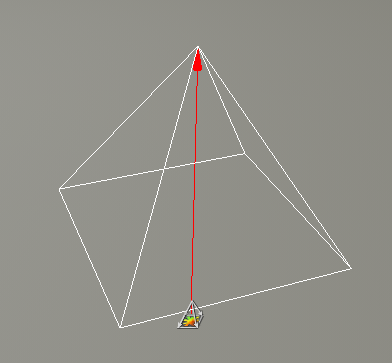 Placement of the Projected Decal
Placement of the Projected Decal
Editing a Projected Decal#
In the Node tab of the Parameters window, you can adjust the following parameters of the projected decal:
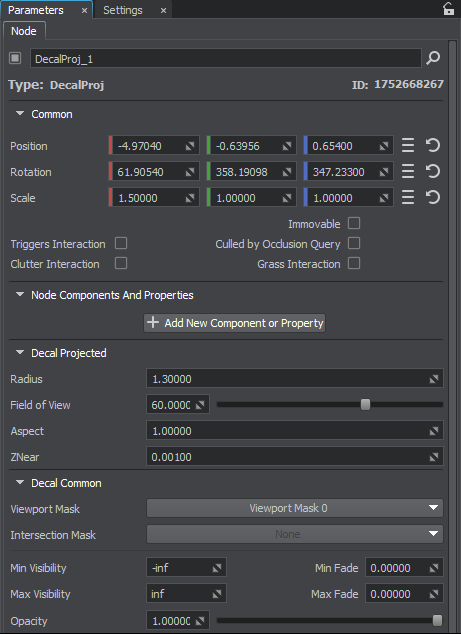
Decal Projected#
Projection parameters of the projected decal:
| Radius | The height of the projection pyramid along the Z axis, in units. |
|---|---|
| Field of View | The field of view of the decal's projector, in degrees. |
| Aspect | The aspect ratio of the decal, in units. |
| ZNear | The value of the near clipping plane, ranging from 0 to 1. |
Decal Common#
Parameters common for all types of decals:
Bit Masks#
| Viewport Mask | A Viewport mask, specifying if the decal can be seen in the camera's viewport. |
|---|---|
| Intersection Mask | The decal's Intersection mask is used paired with the cutout intersection mask of clutters and grass to cut out the clutter or grass in the areas of intersection with the decal (e.g. can be used to remove grass from the surface of a road projected using decal). |
Visibility Parameters#
Parameters controlling the decal's visibility:
| Min Visibility | A minimum visibility distance, starting at which the decal begins to fade in and then becomes completely visible, in units. |
|---|---|
| Min Fade | A minimum fade-in distance, across which the decal smoothly becomes visible due to the alpha fading. It is counted starting from the minimum visibility distance value, in units. |
| Max Visibility | A maximum visibility distance, starting at which the decal begins to fade out until becomes completely invisible, in units. |
| Max Fade | A maximum fade-out distance, across which the decal smoothly becomes invisible due to the alpha fading. It is counted starting from the maximum visibility distance value, in units. |
| Opacity | Opacity of the decal. This parameter enables you to control whether the decal should be semi-transparent or fully opaque (by the value of 1). |
Setting a Material#
The material selection:
| Material | A new material for the decal. |
|---|
The information on this page is valid for UNIGINE 2.19 SDK.